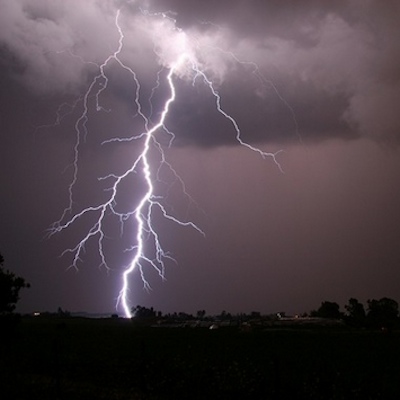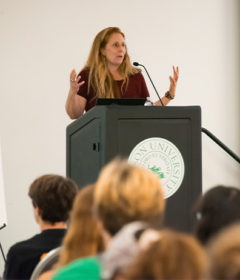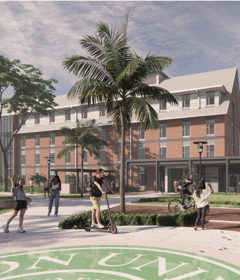Stetson adds sirens for lightning safety
 Florida experiences 25.3 lightning strikes per square mile, or 1.45 million strikes per year. That’s more than any other state, according to LiveScience.com.
Florida experiences 25.3 lightning strikes per square mile, or 1.45 million strikes per year. That’s more than any other state, according to LiveScience.com.
Because of this electric weather, Stetson University has installed a lightning warning system designed to alert anyone outside on the campus to the presence of weather that can produce lightning.
“Tropical weather in Florida, especially during the summer months, is always challenging with severe storms that quickly build and provide intense conditions,” said Bob Matusick, director of Public Safety. “The safety of our students, faculty, staff, and visitors is always top of mind, even as we encourage them to enjoy this beautiful campus.”
“We want to make sure that our community is as safe as it can be,” said Chris Kandus-Fisher, vice president of Student Affairs. “The lightning warning system will provide alerts to the community at a moments notice, and will allow everyone to take appropriate precautions to ensure their safety.”
According to Thor Guard, the company that manufactures the system, every thunderstorm produces a unique “electrical footprint” at the surface where lightning is most likely to occur. The extent or shape of this electrical footprint depends on many factors: season, pressure, wind speed, temperature, elevation, and others. Given that all of these factors can change in just seconds, the electrical footprint also changes to reflect the favorable locations for lightning to strike.
When the Thor Guard equipment detects an electrical footprint with a 98 percent probability for a lightning strike within a 2.5-mile radius of campus, it will automatically send a 15-second audible alert through sirens installed at the Public Safety building, the scoreboard at the Athletic Training Center and the pool at the Hollis Center.
The sound is the same as what you would hear on a golf course when bad weather approaches. If you are outdoors and you hear the sirens you should move indoors immediately. Once conditions return to a safe level, the system automatically signals an all clear alert – three five-second siren blasts.
“This system is automatic and requires no user input to issue an alert. It simply monitors the conditions and sends the alert when needed,” said Matusick.
Stetson plans to install an additional siren in the cupola on top of Elizabeth Hall to cover the southwest part of campus. Students, faculty and staff are encouraged to seek shelter if they hear the sirens alerting them to the probability of a lightning strike in the area. Also, continue to use good judgment and seek shelter if storm conditions appear to be close to the university, whether or not you hear the siren.
To hear what the different siren alerts sound like, click here.



